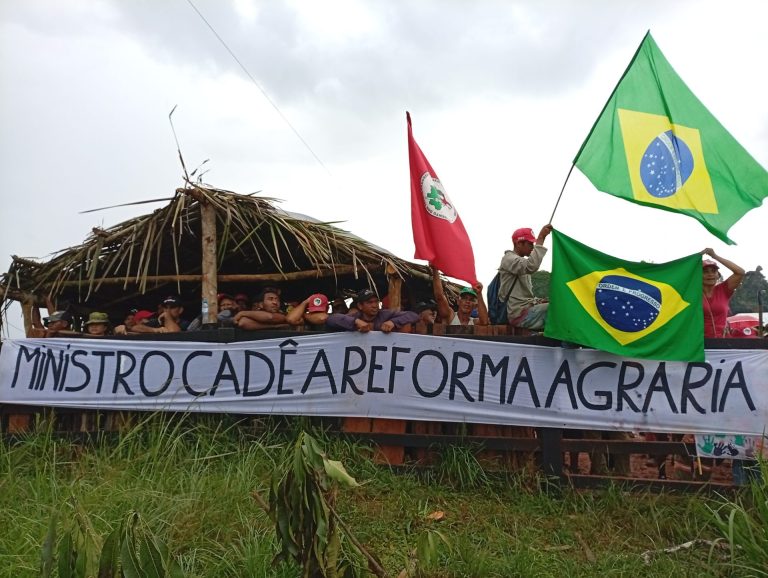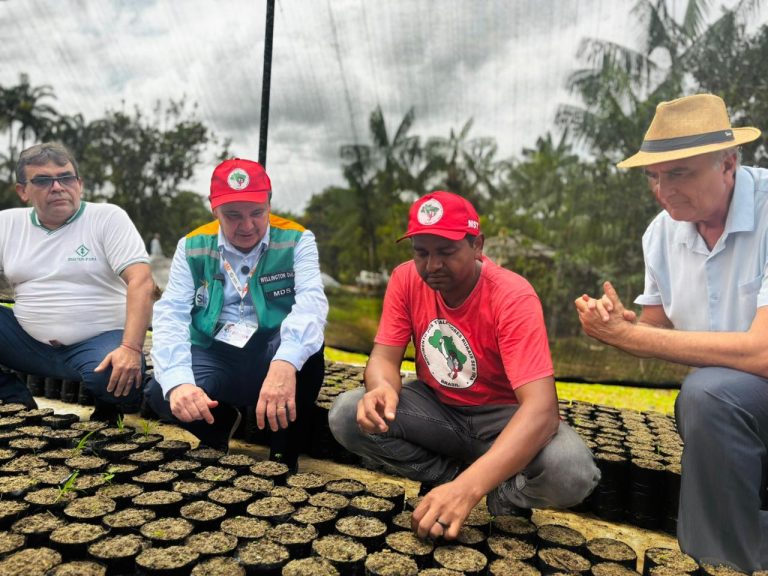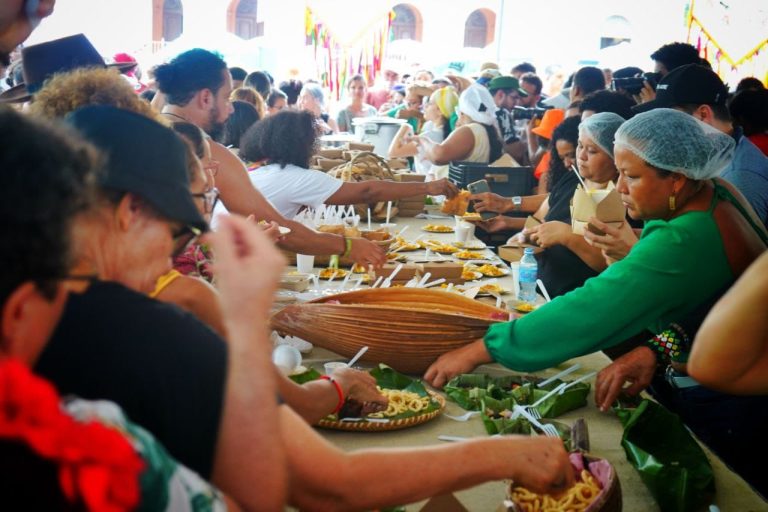MST’s educational experiences in culture and arts maintain alive Paulo Freire’s thought
In the year of the educator's centennial, the MST is developing a set of experiences aimed at reflection and the (re)signification of his legacy and teachings, which are still current
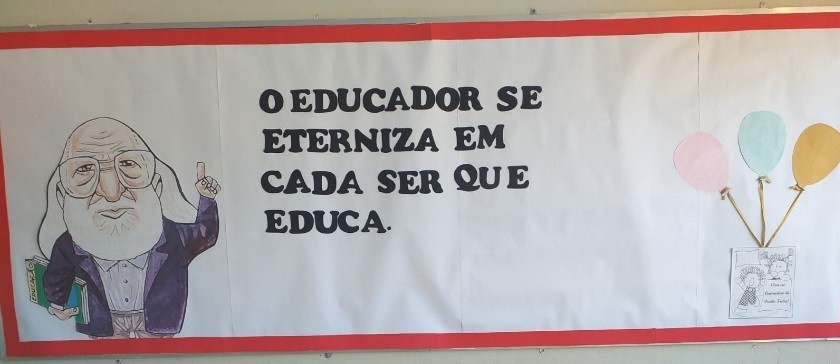
By Solange Engelmann
From the MST webpage
In the centennial year of the popular thinker and educator Paulo Freire, Patron Saint of Brazilian Education, the intention is to remember the importance of his legacy for education and the various dimensions of the lives of working men and women, such as culture, the arts and their interrelation with educational processes. In this context, the MST is developing a set of experiences aimed at the reflection and the (re)signification of the thinker’s thought and teachings, based on educational and formative actions and practices in the field of culture and the arts.
Paulo Freire was an educator who had strong ties to the popular culture movements in Brazil in the 1960s. The educator analyzed the importance of culture as a fundamental element in the formation of human beings and in the process of forming their consciousness. In creating the Culture Circles, Freire sought, through a reflection process stimulated by his educational method, to enable the learner to think and perceive himself as the subject of a society that integrates cultural and social processes and contexts that define his life context and oppress him, as in the case of the historical exploitation of workers in popular culture.
On the other hand, the reflection process stimulated by the Paulo Freire method also seeks to understand the cultural and social contexts, by raising awareness and the possibility of liberation through educational processes. For him, the social transformation of mankind would only be possible through access to education for all.
This is what happens in the reality of the subjects of the Northern region of the country, inserted in the context of life and survival relations with the Amazon, its rivers, land, biodiversity and rich forest, in the Municipal School of Early Childhood Education Maria Salete Ribeiro Moreno and other rural schools, in the Palmares settlement, in Parauapebas, Pará. As part of the pedagogical activities during the pandemic, activities are being carried out with the children’s audience, from four to five years old, and the school’s Youth and Adult Education classes, on the themes of culture, literature, and art.
Sirlene Ferraz da Luz, better known as Cicí, is part of the collective of the Paulo Freire Front for Culture and Education, Gender and Youth in Pará. She is an art teacher that lives in the Palmares settlement. She explains that, in general, activities with literature are also being carried out, on the theme of literary societies in the state, involving the MST Rural Schools and diverse subjects, among landless people, women and youth.
“More recently we have been working with the literary societies. We managed to organize 39 literary societies, with about 258 members. We also have the society of the Sem Terrinha – The Society of Landless Children- which is located more in the region of Cabana and the literature is focused more on children and teenagers. We have developed several activities around the societies, which involve several people”, says Cicí.
The educator of the Escola do Campo, in the Palmares settlement, also reports that the activities around the Paulo Freire’s Centennial in the area of culture and arts are being worked on from the pedagogical notebook, which involves from teacher’s training to activities directed to the students.
“What has prevailed in our MST Field Schools in Pará are the pedagogical notebooks. We have been discussing how to work within the curriculum of the school, among the activities, and, mainly, within the construction of the pedagogical notebook. And in the case of the theme of how to work on the life and work of Paulo Freire, how to bring his legacy and adapt his language to children, which is a challenge. In this sense, we have a work focused on the arts in the state schools.”
The pedagogical notebooks have been worked on in the MST rural schools in the state of Pará, based on the generating and complementary themes, which contemplate elements of the Paulo Freire Method. Cicí says that, due to the Covid-19 pandemic, the notebooks have been thought of as an alternative in the development of activities to involve the students, even at a distance. These are sent every month to the schools, and then distributed in the schools and school routes to the students and/or their guardians. The delivery of the activities is guided and monitored via a WhatsApp application group and physically in the schools.
Art and literature activities reflect on Paulo Freire’s life in Pará
“School is
… the place where you make friends.
School is not only about buildings, classrooms, blackboards
programs, schedules, concepts..School is, above all, about people
People who work, who study rejoice, know and esteem eachMake friends, educate yourself, be happy.
This is where we can begin to improve the world.”
(Paulo Freire)
Some activities developed around the theme of the celebration of Paulo Freire’s Centennial, in the pedagogical notebook of June this year, by the Municipal School of Early Childhood Education Maria Salete Ribeiro Moreno, located in the Palmares settlement, in Parauapebas/PA, focused on image reading: “Reading and Coloring the World” and work with drawing.
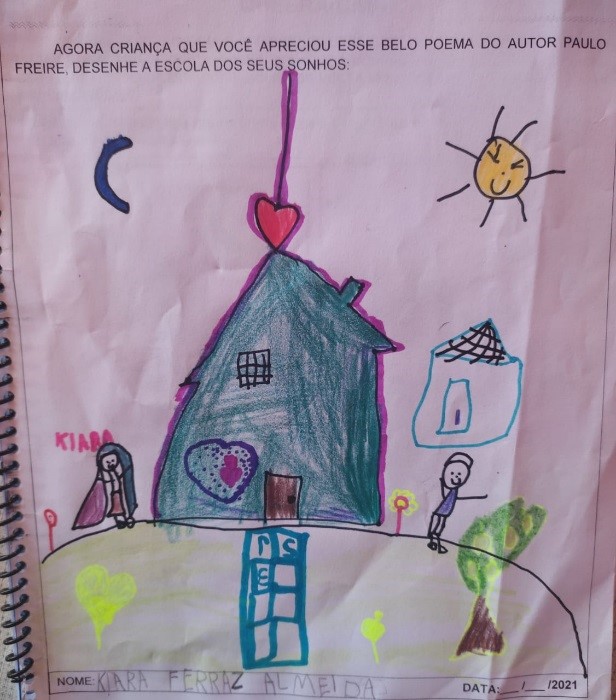
According to teacher Cicí, the public involved was around 200 children of four and five years of age from kindergarten classes, in activities with Paulo Roberto Padilha’s cordel (a cord), called “A cordel with Paulo Freire” and with Paulo Freire’s poem, “School is in which the students were encouraged to produce drawings about the school of their dreams. “The goal was to talk about the centennial and the relevance of Paulo Freire’s legacy in a playful way with the pre-school children. The activity brought Paulo Freire’s thought present through the imagination of the dream school, cordel, and the images and caricatures themselves. About the importance of defending the public and quality school. Paulo Freire’s thought reaffirms the defense of a different school, the working class school,” he comments.
Sirlene da Luz reports that, during this year, the school is also working on planning moments with literary indications of Paulo Freire, with his biography with the teachers, permanently with generating themes, we made a mural of the centennial at the entrance of the school,” says Cicí.
“Making art with Paulo Freire”
In the Escola Municipal de Ensino Fundamental (EMEF) Crescendo na Prática, also located in the Palmares II settlement, in Parauapebas/PA, an experience in the cultural area, inspired by Paulo Freire’s legacy, was developed with classes of Youth and Adult Education (EJA). The art activity took place from the systematization of the pedagogical notebook of May this year, based on fragments of the book “History of the boy who read the world”, by Carlos Rodrigues Brandão about Freire’s life.
“Paulo Freire, one of the most outstanding thinkers in world pedagogy, had a poor childhood, even having to live with the suffering of hunger. He grew up and became an educator, developing one of the most effective methods for literacy (…). This way of teaching, based on the so-called “generating words”, fosters not only the apprehension of reading and writing, but also the discussion of the social reality of those involved”, informs the book’s summary.
Cicí explains that the theme of the activity was “Making Art with Paulo Freire”, in which the educator worked with the presentation of elements about the life history of the educator and some images. Based on this, she suggested to the students the production of drawings, paintings, and caricatures, based on the rereading of the thinker’s life.
According to her, the activity was important for bringing Freire’s thought to mind, as well as the importance of getting to know his legacy and its relevance to education, in thinking about a school that trains for life.
“The goal was to introduce the students to Paulo Freire’s legacy, talking about the centennial and his importance for education, considering that many stories of students in youth and adult education present the challenge that goes through the literacy process. In this sense, I asked the students about their stories. What about you, have you ever wanted to write your own story? Tell me about your literacy process, how you learned to read and write. Is your story similar to the story of the educator Paulo Freire? You can write in the form of a cordel, poetry, letter, drawing, painting, or collage,'” teaches the educator.
The art teacher from Pará also says that one of the things she learned with the students from the settlement was to realize that many of them identified themselves with the story of the educator and his conception of education. “The biggest learning was working about Paulo Freire, talking about his legacy, and knowing that many of the students identify with his life story, that Paulo Freire’s dreams and hopes to build a liberating education materialize in each student, who continues to build knowledge, even in the face of adversity,” she concludes.
MST Art School reflects on the importance of popular protagonism and Paulo Freire’s legacy
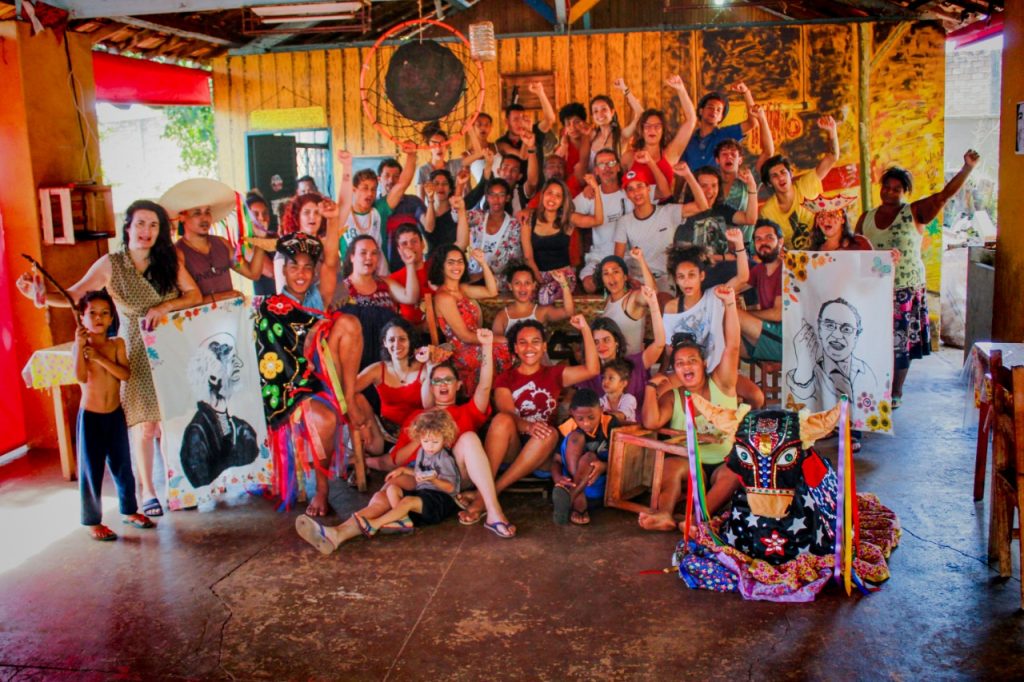
Moving to the Southeast region of the country, among the activities in preparation for the educator’s centennial and in dialogue with his legacy, in October 2019, through the MST’s culture sector in Minas Gerais, the second Art School of the Southeast region was held, called “João das Neves Art School”.
The second school occurred from previous processes, such as the National Agrarian Reform Art and Culture Festival, held by the MST in Belo horizonte, Minas Gerais, in 2016, and from arts workshops held in partnership with artists João das Neves and Titani, in the state, points out Guê Oliveira, a singer and activist from the MST’s culture sector in Minas Gerais.
According to her, the relationship of the “João das Neves Art School” in dialogue with Paulo Freire’s legacy can be perceived from the appreciation and the perspective of culture, which brings the people as the protagonist of the process and of the cultural knowledge.
“Considering popular culture from the perspective that it is the people who are the protagonists of popular culture, with all their knowledge. This protagonism of the people – considering the people as subjects in their creative process – we drink from this source at school. So, we will realize that there is an element in the school that dialogues with Paulo Freire’s elements. Since João das Neves and Titani start from the elements of the struggles, from the indigenous contexts, which worked on the cultural matrixes and on popular education. Thus, we think of the school as a space for the socialization of art, as popular methodologies”, contextualizes Guê.
In this sense, the artist and activist of the MST’s culture sector in MG, explains that the school’s objective was to conceive art as an action of understanding the contradictions of the world, working with elements that dialogue with Freire’s thought. He started from the life experiences of the people to understand the cultural matrixes of Brazil. “When we created the scenes, created the music, the whole creative process was based on our experiences and life experiences. That is, the raw material was our history, our experience. So we started from a place. And this place is not outside us. It is inside our experiences and experiences. Valuing, those experiences and experiences, as a knowledge.”
Agatha Azevedo, a member of the MST’s communication group in Minas Gerais, who participated in the first Art School in the state, tells how the teachings of João das Neves, and of the schools that came after him, were fundamental to think, based on artistic languages, other ways of doing base work, active resistance and MST’s actions, in the construction of the Popular Agrarian Reform in the state.
“I had the joy of participating and learning from the experience of João das Neves and Titani, at the time, in our Training Center in Minas Gerais, with several workshops and exchanges, building some scenic choirs and interventions, which could project other forms of grassroots work. And from then on I was able to contribute to the online art school, and I take this legacy of practical performance of culture to all the spaces I experience. Culture ends up being present in all these spaces, so that we can think life and struggle in a more human way.
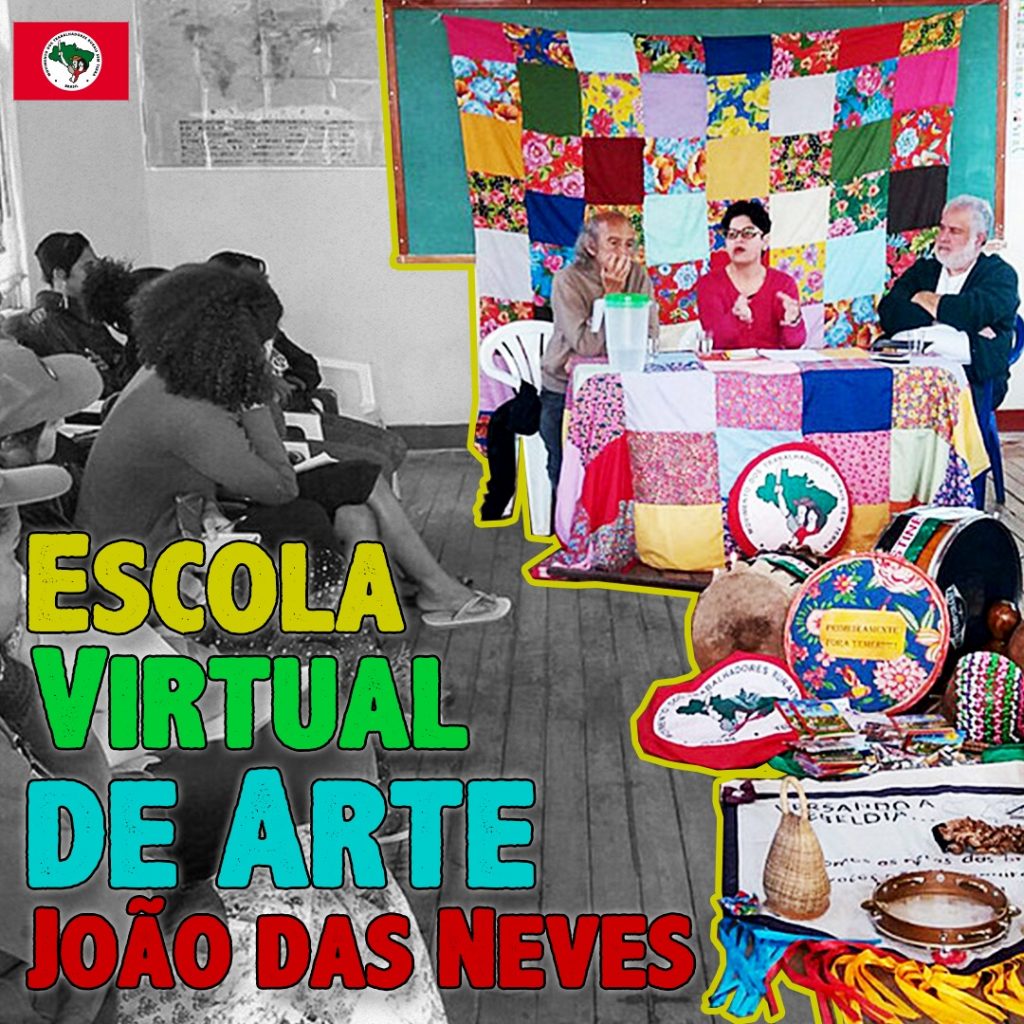
Guê also says that the experience of the “João das Neves School of Art” has become an artistic expression of the landless workers and has generated other activities, such as national schools of arts by the MST, the João das Neves Virtual School of Art and Culture, and the Belo Horizonte carnival block Pisa Ligeiro. Moreover, this school’s conception of culture and art influenced the MST Trainers’ Training Course in Minas Gerais, in thinking about the importance of these dimensions in the grassroots work in MG, with the realization of radio, music and mural workshops, as well as the composition of the song “Mar de Bandeiras”.
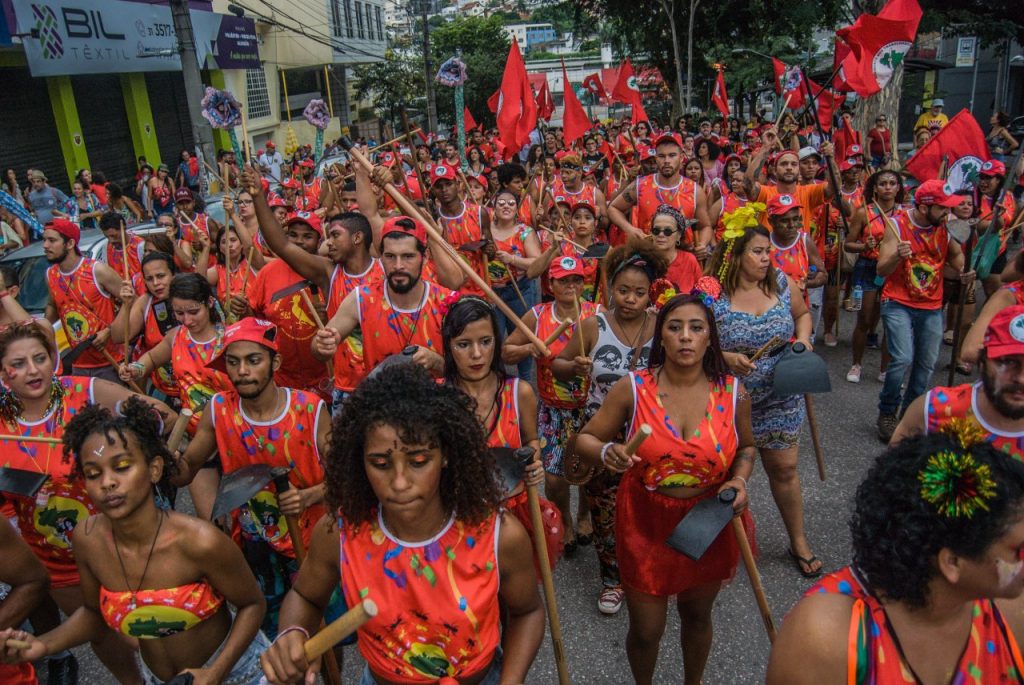
“The creative process of the song occurred from the Art School, where the women were creating phrases – it was a process that started from a collective experience among the women. And from these phrases I put together a lyric and made the music,” explains Guê.
Check out the lyrics of the song Mar de Bandeiras:
“Sea of Flags
We are women, we are warriors. We
won’t sink, we’ll be a sea of flags
Beauty on the lips of our companions
red be that of the flags
life, in flowers
Tapping our feet on the ground, without painCHORUS
Daring women guide us
Planting and weaving rebellion
The resistance we will dance We
are awake for the fight.(Composition: Women of the MST in MG. Music: Guê Oliveira)
*Edited by Fernanda Alcântara



